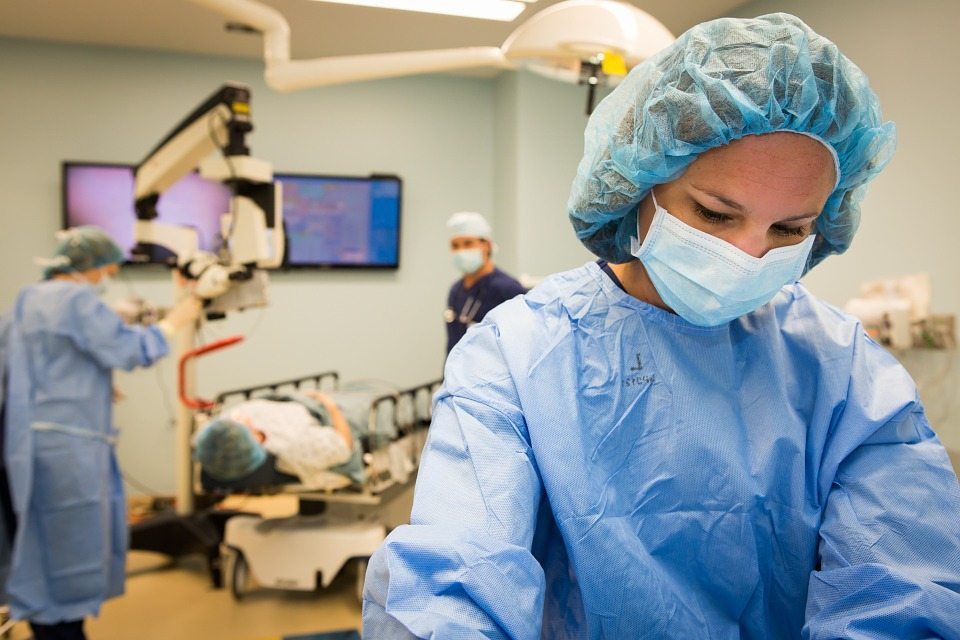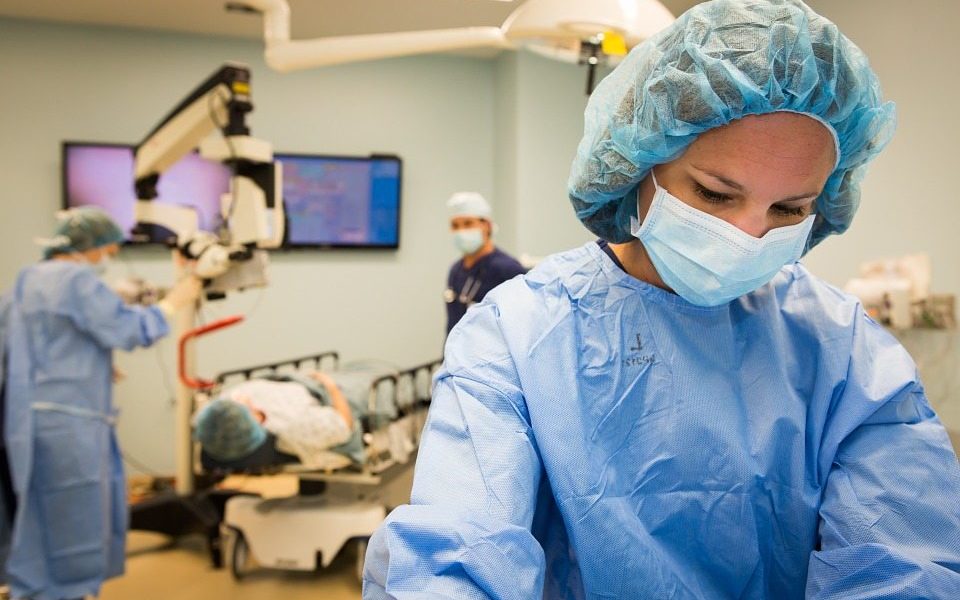What is Selective Dorsal Rhizotomy (SDR) Surgery?
Selective Dorsal Rhizotomy (SDR) is a surgical technique aimed at helping children with cerebral palsy who have spasticity in their lower limbs (spastic diplegia or diparesis).
Spasticity, which causes muscular stiffness and pain, occurs when abnormal signals are sent from the brain to the muscles. By very carefully and selectively severing the individual portions of nerve roots that contribute the most to spasticity, the number of abnormal signals is reduced. As a result, SDR reduces spasticity in the lower limbs.

Jump to:
- Who Is a Candidate for SDR?
- Preparing for Selective Dorsal Rhizotomy Surgery
- What Happens During an SDR Procedure?
- SDR Recovery and Physical Therapy
Who Is a Candidate for SDR?
It is important to note that selective dorsal rhizotomy is not right for everyone with cerebral palsy. Children best suited for SDR typically have the following characteristics:
- Spasticity in the lower limbs
- Unimpaired cognitive function
- No fixed contractures (permanent inability to move joints through a normal range of motion)
- Postural stability
Some children with upper-extremity spasticity in addition to lower-extremity spasticity (spastic quadriparesis) may benefit from SDR, but the benefits of the procedure in the upper body are usually less dramatic than in the lower body. Children with spastic quadriparesis who also have significant dystonia are typically not good candidates for SDR, however – other options, such as a baclofen pump, may be better.
There are certain circumstances under which SDR isn’t the best option for decreasing excessive muscle tone. If a child depends on spastic tone for postural support when sitting upright, they may have poor underlying muscle strength. If a child has poor underlying muscle strength, the outcome of SDR may mean decreased potential for walking. Because of this, a thorough preoperative evaluation is very important.
Usually, SDR is performed in young children under the age of approximately eight years old, though some older children can benefit as well if they qualify. Physicians should always be consulted regarding whether surgical intervention is appropriate.
Preparing for Selective Dorsal Rhizotomy Surgery
Before having an SDR procedure, there is a recommended wait period of at least six months after any orthopedic surgery and at least three months after the child’s last botox injection.
To evaluate whether SDR is suitable for your child, medical professionals will likely request a magnetic resonance imaging (MRI) brain scan to determine what areas of the brain are affected (to verify that they do have spastic cerebral palsy, and do not have other conditions that may make them ineligible for the surgery), and x-rays of their hips to determine stability. Your doctor should carefully discuss with you the potential costs and benefits of SDR, as they relate to your child’s unique situation.
To truly benefit from SDR, post-operative rehabilitation is essential. Before your child goes into surgery, your doctor should help you come up with a clear plan for physiotherapy, and ensure that your child is motivated and will cooperate with the therapeutic regimen.
What Happens During an SDR Procedure?
For the duration of the selective dorsal rhizotomy surgery, your child will be under general anesthesia. The surgeon will make a small incision in the lower back, through which they can gain access to the spine and expose the nerve fibers. They then separate the motor nerves from the sensory nerves. The surgical team will stimulate the sensory nerves to see which are responding abnormally and causing spasticity. The surgeon will then cut some of the abnormal nerves. How many are cut depends in part on the preoperative assessment as well as the results of the neurostimulation monitoring. To finish the procedure, the team will close up the membrane that covers the spinal cord, return the surrounding muscles to their original positions, and close the incision with dissolvable stitches.
SDR Recovery and Physical Therapy
Following SDR surgery, medical professionals should closely monitor your child to make sure they are recovering normally and that their pain is appropriately controlled, usually with medication given through an IV. Patients should remain in bed for the first few days after surgery (to prevent spinal leakage), with a bladder catheter in place. Children may experience mild headaches. Some will also have uncomfortable leg spasms, which can be managed with muscle relaxants.
A few days after the operation, the catheter will be removed, and your child will no longer be confined to their bed. However, they may report numbness or weakness in their legs. Medical professionals will begin with a gentle regimen of physical therapy, gradually increasing it over time.
After discharge from the hospital, it is critical that patients participate in frequent physiotherapy sessions. Exactly what this will entail depends on your individual child’s needs, but will likely consist of a few weeks of inpatient therapy, and then six months to a year of outpatient therapy.
Selective Dorsal Rhizotomy: Benefits, Outcomes, and Success Rates
The reduction in spasticity is usually seen almost immediately after SDR, but there are also negative effects. These include weakness and an inability to control movements. With time and extensive physical therapy, your child should regain their strength and learn how to coordinate movements with less interference from spastic reflexes (this process may take up to two years). In addition to reduced spasticity, there should be improvements in dexterity, speed, and range of motion.
Common short-term side effects are a lack of bladder control and hypersensitivity in the soles of the feet. Other potential negative effects include:
- Curvature of the spine
- Disk protrusion
- Black disks (dehydrated spinal disks)
- Back pain
- Spinal stenosis (an abnormal narrowing of the spinal canal, which can cause neurological issues)
Despite the risks, there is substantial evidence for positive improvement in children who have SDR. Walking tends to become easier, and quality of life increases. Some studies show that certain benefits of SDR can persist into adulthood. There is also some suggestion that SDR reduces the need for orthopedic surgeries further down the line.
The information presented above is intended only to be a general educational resource. It is not intended to be (and should not be interpreted as) medical advice. If you have questions about selective dorsal rhizotomy (SDR), please consult with a medical professional.
Learn More About SDR:
- Selective Dorsal Rhizotomy: An Overview
- SDR: Who is a Good Candidate for Selective Dorsal Rhizotomy?
- How does SDR Work?
- Selective Dorsal Rhizotomy: A Research Study
- Seattle Children’s Hospital: Selective Dorsal Rhizotomy
- Long-term outcome and adverse effects of selective dorsal rhizotomy in children with cerebral palsy: a systematic review

